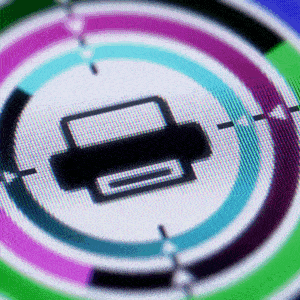This lesson plan aims to explore a specific aspect of Catholicism: why Catholics pray to Mary and the Saints. This is often a point of confusion or debate, both among Catholics and between Catholics and non-Catholics. In this lesson, we will break down the theological basis for this practice, supported by key biblical texts and teachings from the Church. The goal is to offer clarity and understanding on the topic.
The lesson will include various activities such as discussion, scripture reading, and even a small group role-play exercise to solidify the concepts. It's designed to be interactive and engaging, ensuring that everyone has a good grasp of the subject by the end of the session. Whether you're a devout Catholic wanting to deepen your faith, or someone just curious about this aspect of Catholicism, this lesson is designed to answer your questions in a straightforward manner.
Game for Lesson Plan about Praying to Mary and the Saints
Play protection dodge ball:
- Choose three people to throw the dodge balls.
- Divide the rest of the group into teams of two.
- One person on each team ("protector") should try to protect the other person ("protectee") from being hit.
- If the "protectee" is hit, the team is out.
For complete instructions, see how to play protection dodge ball.
Follow up with a few questions:
- Was it easier to avoid being hit with someone helping you?
- Do you think this game is easier as a team?
- How well did you work together?
Why Do Catholics Pray to the Saints?
As Catholics, we believe that all who are baptized are members of the mystical body of Christ. We are all connected in a very special way. We support each other in our faith journey.
- Have you ever asked another Christian to pray for you? Why?
- Have you ever prayed for someone else?
Yes, part of that support includes praying for each other.
The bible tells us that we should pray for each other.
Therefore, confess your sins to one another and pray for one another, that you may be healed. The fervent prayer of a righteous person is very powerful.
James 5:16
We also believe that the faithful, when they die, go to heaven, where they worship God with the angels and all of the saints. And the book of Revelation tells us
Another angel came and stood at the altar, holding a gold censer. He was given a great quantity of incense to offer, along with the prayers of all the holy ones, on the gold altar that was before the throne. The smoke of the incense along with the prayers of the holy ones went up before God from the hand of the angel.
Revelation 8:3-4
So the angels and saints in heaven are able to pray to God. But they aren't praying for themselves, since they are already in heaven.
So who are the angels and saints praying for? Us!
Catholics believe it is totally appropriate to ask others for prayers. We do this all the time with other Christians on Earth. This is why we pray to the saints. We are asking them to offer prayers to God for us. As members of the mystical body of Christ, it is right that we ask those who are already in heaven to pray for us also. This is why Catholics pray to the saints.
And it is important to understand that prayer is not the same as worship. Worship is for God alone. When we worship God, we recognize him as our creator and the ultimate mover in our lives.
Prayer is a spiritual conversation. When we pray to the saints, we are not worshiping them. We know that they have no power on their own. But in prayer, we ask them to repeat our requests to God and ask for his help for us. This is no different than asking a friend to pray for us.
Why Do Catholics Pray to Mary?
So why do Catholics pray to Mary in particular?
Jesus listens to Our Blessed Mother
Mary, as the mother of our Lord Jesus Christ, has a special place in our hearts. And we know that when she asks something, Jesus listens to her. Consider the wedding at Cana
When the wine ran short, the mother of Jesus said to him, "They have no wine."
John 2:3-5
And Jesus said to her, "Woman, how does your concern affect me? My hour has not yet come."
His mother said to the servers, "Do whatever he tells you."
We know the rest of the story, Jesus turns the water into wine. He does this at the request of his mother Mary.
Mary is the Queen
It is also important to understand a little history. During the time of King David and the later kings, the king's mother held a very important position. She advised her son, the king, especially concerning the needs of the people.
In fact, the title of queen did not belong to one of the king's many wives. Instead, the king's mother was the queen. And she was greatly honored. Consider how King Solomon treated Bathsheba, his mother
Then Bathsheba went to King Solomon to speak to him for Adonijah, and the king stood up to meet her and paid her homage. Then he sat down upon his throne, and a throne was provided for the king’s mother, who sat at his right.
1 Kings 2:19
She is advocating for one of Solomon's brothers. Solomon stands up, bows to her, and sets up a throne for her.
Mary, as the mother of our Lord, holds this position in our spiritual lives. We proclaim Jesus Christ as our king. According to Jewish tradition, this makes Mary, his mother, our queen. And just like the queens of the past, we believe she advocates for the needs of us, the people of God.
Reflection Questions for Why Do Catholics Pray to Mary and the Saints? Lesson Plan
- Why is is helpful to ask others to pray for us?
- Do you feel comfortable asking Mary and the saints to pray for you? Why or why not?
- Do you ever ask a personal saint, such as a grandparent who has passed away, to pray for you? How does your relationship with this person impact your prayer?
Challenge for the Lesson Plan
When you pray this week, ask one of the saints or our Blessed Mother to pray with you. Remember that you are not on your own. You belong to a vast community as a member of the mystical body of Christ. And that community includes those here on earth and those in heaven.
Prayer for the Why Do Catholics Pray to Mary and the Saints? Lesson Plan
As a closing prayer for this lesson plan on why Catholics pray to Mary and the saints, pray the Memorare. This traditional Catholic prayer is specifically addressed to Mary and is often prayed for her intercession in times of need. It serves as a fitting conclusion, encapsulating the themes of intercession and the role of Mary and the saints in Catholic prayer life.

Resources
Themes for the Why Do Catholics Pray to Mary and the Saints? Lesson Plan
- Theological Basis: Exploring the fundamental religious principles behind why Catholics pray to Mary and the saints.
- Biblical References: Analyzing key scriptures that provide context or support for the practice of praying to Mary and the saints.
- Role of Intercession: Understanding the concept of asking Mary and the saints to intercede or pray on one's behalf.
- Veneration vs. Worship: Clarifying the difference between veneration (reserved for Mary and the saints) and worship (reserved for God).
- Special Role of Mary: Examining why Mary holds a unique position among the saints and why she is especially venerated.
- Common Prayers: Discussing specific prayers like the Rosary that are often used when Catholics pray to Mary and the saints.
- Misconceptions: Addressing common misunderstandings, such as the notion that praying to Mary and the saints is a form of idolatry.
- Practical Guidelines: Covering the appropriate ways and intentions for praying to Mary and the saints.
Background Material for the Why Do Catholics Pray to Mary and the Saints? Lesson Plan
The Catechism of the Catholic Church, in paragraph 971, emphasizes the special devotion to the Blessed Virgin Mary within the Church. It notes that this devotion differs essentially from the adoration given to the triune God. The paragraph upholds Mary as a key figure of intercession and advocacy, clarifying that veneration of her is deeply rooted in Catholic tradition.
"All generations will call me blessed": "The Church's devotion to the Blessed Virgin is intrinsic to Christian worship." The Church rightly honors "the Blessed Virgin with special devotion. From the most ancient times the Blessed Virgin has been honored with the title of 'Mother of God,' to whose protection the faithful fly in all their dangers and needs. . . . This very special devotion . . . differs essentially from the adoration which is given to the incarnate Word and equally to the Father and the Holy Spirit, and greatly fosters this adoration." The liturgical feasts dedicated to the Mother of God and Marian prayer, such as the rosary, an "epitome of the whole Gospel," express this devotion to the Virgin Mary.
Catechism of the Catholic Church, in paragraph 971
Mary holds a unique role in the pathway to Christ, affirming that devotion to her does not detract from the full recognition of the glory of Christ, but rather leads to it. This Catechism entry serves as a foundational reference for understanding why Catholics pray to Mary.
The Catechism of the Catholic Church, in the section on the Communion of Saints, explains that saints serve an important role in the spiritual lives of the faithful. They "contemplate God, praise him and constantly care for those whom they have left on earth." The saints’ intercession is described as their most significant service to God's plan. The Catechism encourages believers to ask saints for their intercession for personal needs and the world at large. This suggests a form of spiritual solidarity between the living and the saints, reinforcing the idea that prayer is a communal activity that extends beyond earthly life.
Pope Francis, in his General Audience on April 7, 2021, focused on the interconnectedness of prayer within the community of saints. He emphasized that when people pray, they are part of a larger community that spans history and time, including saints who have passed away and those alive on earth. He noted that saints are those who have had a meaningful encounter with Jesus Christ and that they continue to intercede for people on earth.
Pope Francis also underscored the role of saints as mediators who draw individuals closer to Jesus. He said saints don't only exist in history; they are among us, living lives of holiness, even if we or they don't recognize it. The Pope stressed that prayer is a communal activity, linking all believers in a chain of intercession and support.
Music Suggestions for the Why Do Catholics Pray to Mary and the Saints? Lesson Plan

Youth Ministry Lesson Plans and Reflections
Lesson plans are meant to give a framework for introducing information to youth. This Why Do Catholics Pray to Mary and the Saints? lesson plan is part of a larger set. Most of these also include reflection questions for small group sharing. These help youth think about how to apply what they have learned to their everyday lives.


Leave a Reply